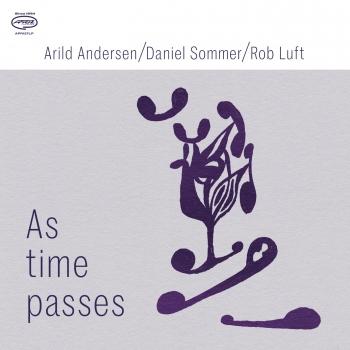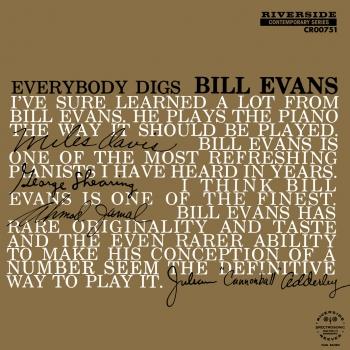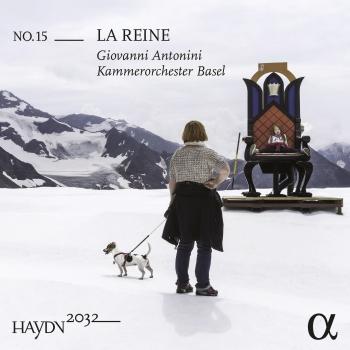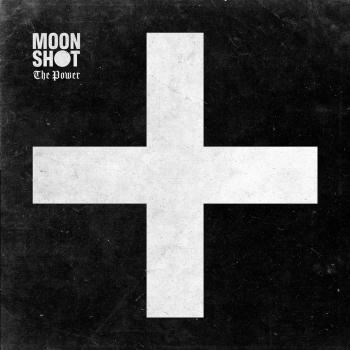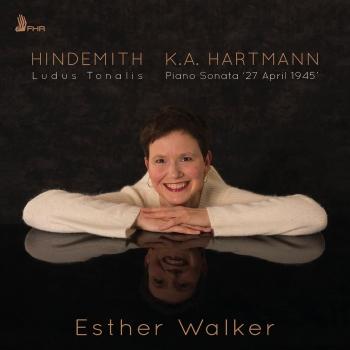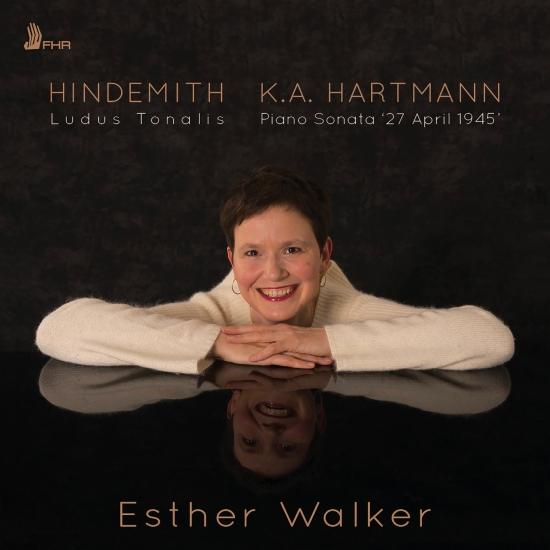
Hindemith: Ludus Tonalis - Hartmann: Piano Sonata "27 April 1945" Esther Walker
Album info
Album-Release:
2018
HRA-Release:
01.06.2018
Label: First Hand Records
Genre: Classical
Subgenre: Instrumental
Artist: Esther Walker
Composer: Paul Hindemith (1895–1963), Karl Amadeus Hartmann (1905-1963)
Album including Album cover Booklet (PDF)
- Paul Hindemith (1895-1963): Ludus tonalis:
- 1No. 1, Prelude03:52
- 2No. 2, Fugue No. 1 in C Major. Slow03:17
- 3No. 3, Interlude. Moderate, with Energy01:17
- 4No. 4, Fugue No. 2 in G Major. Gay01:36
- 5No. 5, Interlude. Pastorale, Moderate01:12
- 6No. 6, Fugue No. 3 in F Major. Andante02:49
- 7No. 7, Interlude. Scherzando01:20
- 8No. 8, Fugue No. 4 in A Major. With Energy - Slow, grazioso - Tempo primo02:53
- 9No. 9, Interlude. Fast01:15
- 10No. 10, Fugue No. 5 in E Major. Fast01:09
- 11No. 11, Interlude. Moderato01:01
- 12No. 12, Fugue No. 6 in E-Flat Major. Quiet02:18
- 13No. 13, Interlude. March01:52
- 14No. 14, Fugue No. 7 in A-Flat Major. Moderato01:55
- 15No. 15, Interlude. Very Broad02:25
- 16No. 16, Fugue No. 8 in D Major. With Strength00:58
- 17No. 17, Interlude. Very Fast01:27
- 18No. 18, Fugue No. 9 in B-Flat Major. Moderate, scherzando02:04
- 19No. 19, Interlude. Very Quiet02:15
- 20No. 20, Fugue No. 10 in D-Flat Major. Moderately Fast, grazioso01:50
- 21No. 21, Interlude. Allegro pesante02:14
- 22No. 22, Fugue No. 11 in B Major. Slow (Canon)02:09
- 23No. 23, Interlude. Valse01:51
- 24No. 24, Fugue No. 12 in F-Sharp Major. Very Quiet03:08
- 25No. 25, Postludium03:38
- Karl Amadeus Hartmann (1905-1963): Piano Sonata "Den 27. April 1945":
- 26I. Bewegt04:34
- 27III. Marcia funebre. Lento09:25
- 28IV. Allegro risoluto07:14
Info for Hindemith: Ludus Tonalis - Hartmann: Piano Sonata "27 April 1945"
Pianist Esther Walker performs the rarely recorded work ‘Ludus Tonalis’ by Paul Hindemith along with Karl Amadeus Hartmann’s Piano Concerto ‘27 April 1945’.
Paul Hindemith and Karl Amadeus Hartmann were born a decade apart but died in the same month. Hindemith was the more inclusive artist while Hartmann more fully reflected the cultural concerns of his time and their differences are conveyed by the contemporaneous but aesthetically different pieces on this disc. Composed in 1942 during Hindemith’s stay in the United States, Ludus Tonalis was first performed in 1943 in Chicago. It is one of the greatest solo piano works of the mid-20th century, exploring matters of technique, theory, inspiration, and communication. This masterpiece comprises all 12 major and/or minor keys and was intended to be the 20th century equivalent to J.S. Bach’s The Well-Tempered Clavier.
Written just three years after Ludus Tonalis, Hartmann’s Piano Sonata [No.2] depicts the shuffling feet of 20,000 camp prisoners from Dachau whom Hartmann watched being marched away from the approaching Allies. The subtitle of Hartmann’s work, ‘27 April 1945’, is clarified by an epigraph the composer (in his own words) positioned at the head of the score: ‘On the 27th and 28th of April 1945 trudged an endless stream of Dachau prisoners of war past us ... unending was the misery ... unending was the
sorrow’. This is made explicit by the (central) Lento, a ‘Marcia funebre’ that ranks with Hartmann’s finest utterances; its sombre and fatalistic tread - shot through with fanfare- like elements - reaching an impassioned climax before regaining its mood of numbed sorrow.
Esther Walker, piano

Esther Walker
A pianist who combines “virtuoso fire and musical temperament” with “lyrical sensibility” in an almost ideal way. This was the reaction of the Göttinger Tageblatt to Esther Walker’s emotionally affecting reading of Mozart’s Concerto K503. These qualities had previously commanded the attention of the Frankfurter Neue Presse, which had noted that “the way in which Walker brought out the inner voices contrapuntally was nothing short of phenomenal.”
Esther Walker was born in Zurich and studied with Brigitte Meyer at the Conservatoire de Lausanne and with Walter Levin at the Basel College of Music. She began her musical career as a violinist and violist before her love of the piano finally gained the upper hand. After several awards in her native Switzerland, she was soon attracing international attention, not least when she won first prize at the Charles Hennen International Chamber Music Competition in the Netherlands and the premio assoluto at the Concorso Internazionale Musicale di Borgaro in Italy. She enjoyed a further personal triumph at the Concours international féminin in Berne, where she was awarded not only the main jury prize but also a special prize for the best interpretation of a contemporary work.
Since then guest appearances have taken Esther Walker to the Menuhin Festival in Gstaad, to Les Muséiques Basel, to the Salzburg Castle Concerts and to Latin America and Cairo, where Al-Ahram Weekly praised her performance of Beethoven’s Fourth Piano Concerto: “She was at once powerful and heroic, witty and mirthful, subdued and meditative, and her dialogue with the orchestra was extraordinary.”
Esther Walker performs a wide-ranging repertory extending from Bach to classical modernism, but her particular love is Mozart, Schubert and Schumann and, above all, the music of the twentieth century. Her sensitivity and the accuracy of her playing are held in high regard by audiences and composers alike, a point that Esther Walker was able to demonstrate most recently in Rome, where in 2015 she gave the world première of 4 Images by the Swiss composer Jost Meier.
As a soloist and a much sought-after chamber musician, Esther Walker works regularly with such ensembles as the Göttingen Symphony Orchestra, the Zurich Camerata and the Orquesta Sinfónica Nacional del Ecuador as well as with distinguished artists such as the baritone Gilles Cachemaille, cellists Joel Marosi and Peter Hörr and violinist Sergey Ostrovsky. She made her Lucerne Festival début in 2004, when she was heard in a performance of Hindemith’s Chamber Music No. 1 for twelve solo instruments under the direction of Claudio Abbado. Hindemith is a composer who occupies a special place in Esther Walker’s affections. In 2011, she began to record all of Hindemith’s piano music as part of a project that has received widespread acclaim in musical circles.
Esther Walker will be returning to this long-term, large-scale project in 2018 with her release of Ludus Tonalis, a set of pieces that she has already performed at recitals in Zurich, Lausanne and elsewhere. Her probing interpreta on of this multilayered work additionally impressed her listeners when she performed it at the Frankfurt Hindemith Festival.

